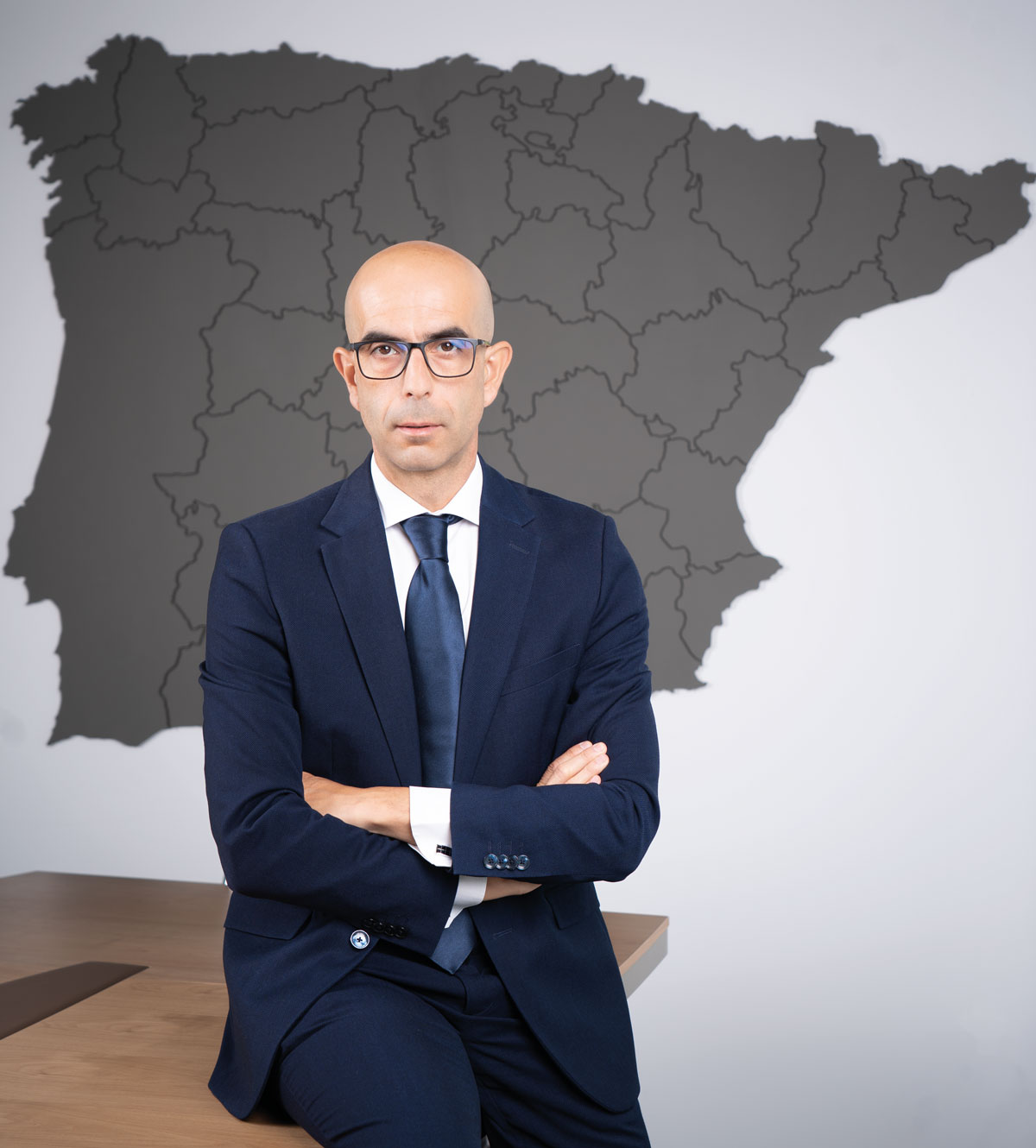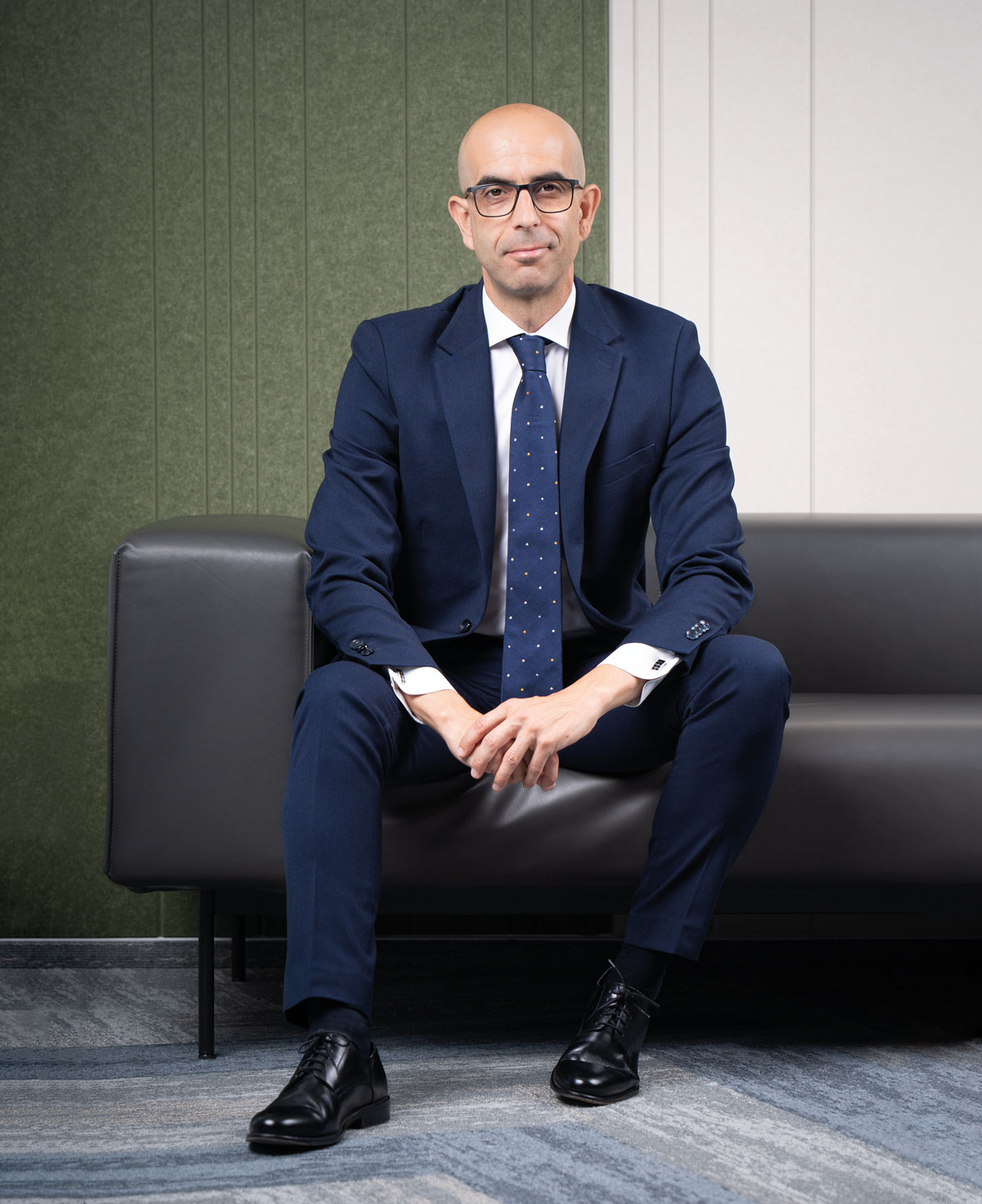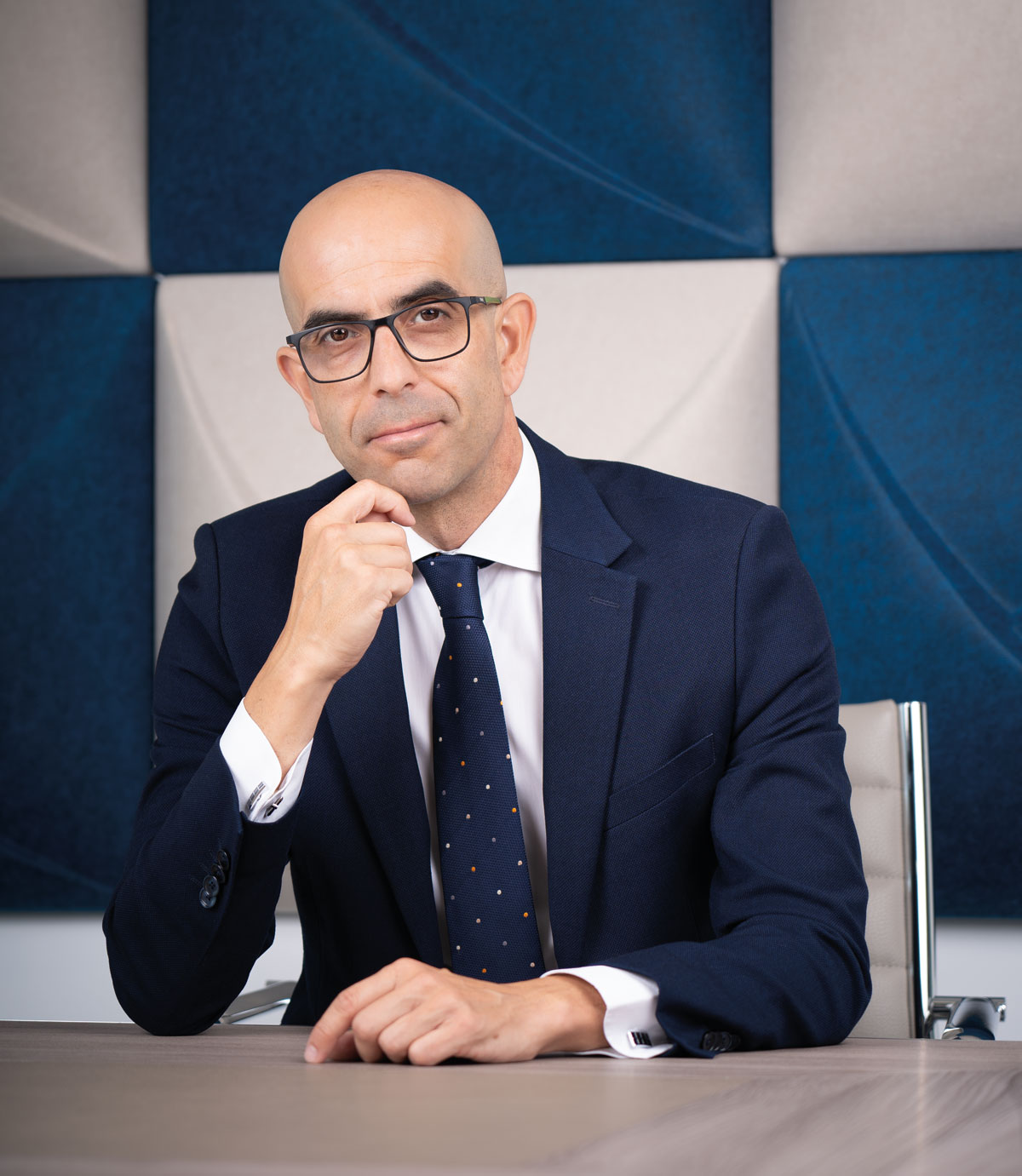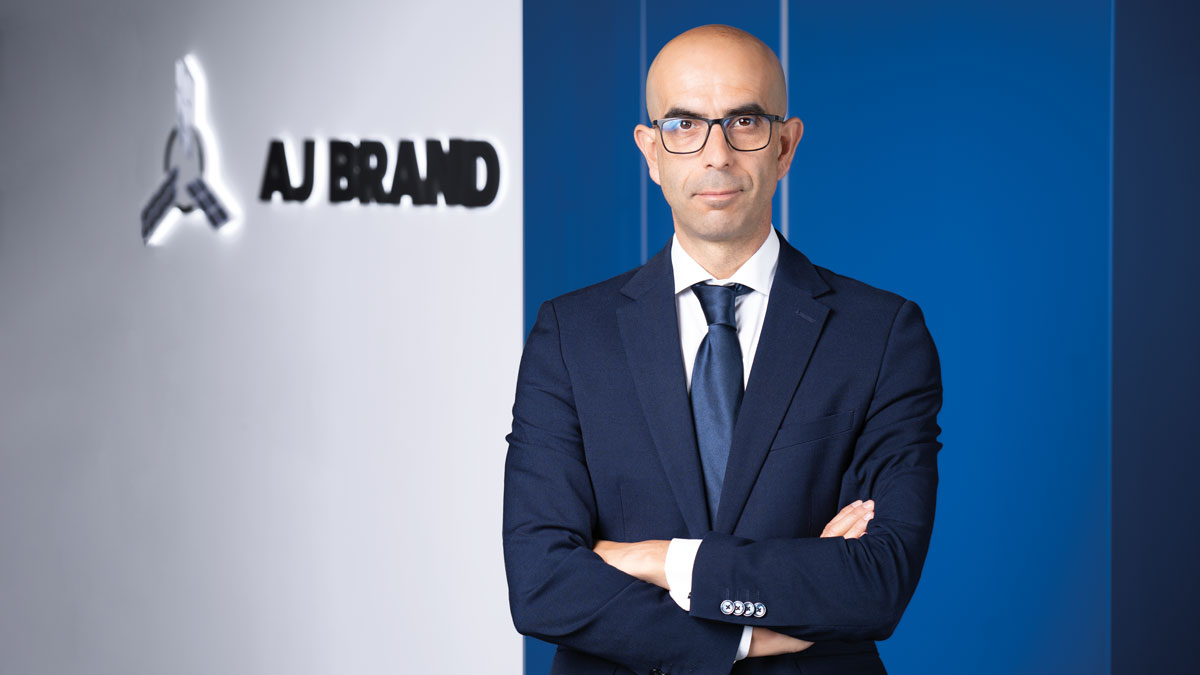Miguel Antonio Jiménez Romero analyses renewable energy investments in Romania and provides insight into the evolution of the global energy transition market.
AJ BRAND is the new identity of AJ Construction, a change officially adopted at the beginning of 2025. At the same time, the group has also merged its development arm, AJ Renewables, into the same structure, creating a stronger and more unified entity. Active in the renewable energy sector since 2008, the company has consolidated construction, development, and operation & maintenance under one name, positioning AJ BRAND as a comprehensive player capable of delivering integrated solutions across the sector. With its headquarters in Bucharest and an additional office in Sevilla, Spain, AJ BRAND combines local expertise with European market experience to provide broader insight and strategy.
As CEO of AJ BRAND, Miguel Antonio Jiménez brings extensive international experience in coordinating and integrating multinational teams and streamlining procedures. He is an expert in oversight and management, optimizing the design and construction of renewable energy projects worldwide and several factories in Europe, focusing on optimizing solutions to reduce costs and provide customer support. In addition to his ability to anticipate production requirements and strategically plan investments in new business lines and facility upgrades, Miguel has strong negotiation and energy management skills for sustainable and cost-effective solutions.
Dear Miguel, you started working in the renewable energy sector more than 20 years ago, working with different technologies and getting involved in development, BOS, EPC, O&M in over 15 countries on 4 continents. As an experienced CEO with a proven track record of success, how would you describe the current situation of the energy sector in the region and domestically?
Miguel Antonio Jiménez Romero: That’s an excellent point to start with, because the energy sector has indeed transformed dramatically in the last two decades, both globally and in Romania. Today, I would describe the situation as one of the most active and accelerated transitions, but also one characterized by significant challenges that require coordinated and rapid action.
At the regional level, we see a strong commitment to integrating renewable energy, driven by ambitious decarbonization targets, attempts to offset rising energy prices, avoiding dependence on external sources, improving regulatory frameworks, and falling costs of solar, wind, and storage technologies. We are also seeing an increase in energy consumption in the coming period and a strategy for the future, driven by new consumers connected to the grid, large industrial groups setting up in the region, new large consumers such as data centres, artificial intelligence, the new generation of green fuels, and car charging points. There is also growing interest in grid modernization, cross-border interconnection, digitization, and smart grids, which are essential for balancing variable renewable energy production and ensuring system stability. The most important aspect is identifying bottlenecks, such as grid congestion, permitting timing, and financing mechanisms.
Domestically, the market shows a dual reality. On the one hand, there is enormous potential: excellent natural resources, strong investor appetite, and growing consumer participation. On the other hand, the sector identifies structural challenges, regulatory uncertainty, lengthy administrative processes, and the need for infrastructure modernization, which should be addressed to enable greater penetration of distributed generation and stable coexistence with the future consumption situation.
Looking ahead, the sector needs to work on some important priorities:
Investments in transmission, distribution, and storage infrastructure, aligned with a long-term overall energy strategy directive, to enable the growth of renewable energy. Regulatory stability and clarity to provide investors and developers with long-term visibility. Financial support and collaboration, proposing benefits such as Contracts for Difference, Certificates of Origin, and support for new business models such as energy communities, corporate power purchase agreements (PPAs), and future green fuel generation to accelerate the transition.
In short, the sector is experiencing a very dynamic period, faster than other markets, which I experienced from the beginning until it was blocked or slowed down by the failure of one of the priorities mentioned above. The opportunity is clear, but the speed and efficiency with which we work to anticipate risk mitigation solutions will define our ability to secure the energy future we want: sustainable, available, and secure.
 © Photo: Justin Iancu / Energy Industry Review
© Photo: Justin Iancu / Energy Industry Review
Speaking of recent years, how do you see the evolution of the RES market in Romania?
Miguel Antonio Jiménez Romero: In recent years, Romania has turned things around, becoming one of the most dynamic renewable energy markets in the region. After an initial period of investment during 2010-2013, the market declined due to regulatory adjustments, and now, in the last five years, we are experiencing a second opportunity, a much more mature market.
The drivers behind this current favourable situation are clear: Romania has excellent natural resources, particularly in terms of wind and solar energy, and is very well positioned within the European energy network. At the same time, Romania is committed to achieving the EU’s objectives and has set national targets for decarbonization and climate neutrality by 2050. And finally, interest from international investors and access to European funding are creating strong momentum.
Then we can see the evolution in a positive sense. More specifically, what is different today compared to the early days is the quality and diversity of the market and the reduced dependence on subsidies. Now, investors and developers are more experienced, and financing tools are more sophisticated. There are a clear need and willingness for long-term investment, demonstrated by the appetite for certain instruments such as corporate PPAs.
In addition, thanks to the favourable evolution of storage solutions, with good quality and cost, the focus is expanding beyond generation to include storage, which is very important for grid reinforcement. Thanks to smart integration, these solutions are essential for the stability and reliability required by the market.
It is very important to understand that challenges remain—grid capacity, permitting timelines, and regulatory consistency—and we need to work on them. However, the direction is positive, and if these challenges are tackled decisively, Romania could become a regional leader in renewable energy, attracting not only international investment capital, but also innovation and industrial development around the energy transition.
 © Photo: Justin Iancu / Energy Industry Review
© Photo: Justin Iancu / Energy Industry Review
As we know, Romania needs substantial investments in renewable energy to achieve sustainable development. In the meantime, the reinforcement, expansion, and upgrade of power grids will certainly require major investments. From your point of view, what are Romania’s needs and the steps required to achieve this goal and successfully attract potential investors?
Miguel Antonio Jiménez Romero: You are absolutely right. You have started to bring up hot topics. Romania’s renewable energy potential can only be fully exploited if accompanied by substantial investment in grid infrastructure and strategy regulation. The needs are clear and urgent: reinforcing transmission lines, expanding distribution networks, integrating modern technologies such as digital monitoring, flexibility services, and storage solutions, with a long-term strategy. Without these upgrades, the growth of renewable deployment will be constrained.
From my experience and perspective, there are three key steps to achieving this and attracting the necessary investment:
Regulatory stability and transparency. Investors need a long-term perspective. Clear and predictable rules and streamlined permitting processes are essential to reduce uncertainty and accelerate project development. Some projects have certain limitations, as raising the necessary funds for huge sums takes time, and subsequently new technological upgrades and new storage solutions must be considered, and finally, permits must be reapplied for or updated, returning to the starting point of the cycle. Infrastructure investment and modernization. This means not only expanding the grid, but also reinforcing the existing infrastructure, adopting smart grid technologies, digitization, and flexibility mechanisms that enable the system to efficiently absorb higher shares of variable renewable energy, while considering system security to avoid any possible grid incidents. Bankable investment frameworks. Romania must continue to promote mechanisms such as long-term PPAs (Power Purchase Agreements), CfDs (Contracts for Difference), and COs (Certificates of Origin) to encourage price stability and attract investors with conservative goals. Also to access EU funds, which give domestic and international investors the confidence they need to commit capital on a large scale.
If Romania manages to achieve these key milestones—clear regulations, modern infrastructure, and bankable investment frameworks—it will accelerate its energy transition and position itself as one of the most attractive renewable energy markets in Central and Eastern Europe. In other well-known countries where I have worked during my career, the market eventually came to a standstill because the above-mentioned issues had not been resolved beforehand.
 © Photo: Justin Iancu / Energy Industry Review
© Photo: Justin Iancu / Energy Industry Review
In this context, what are the essential measures for calming the market, ensuring the technical stability of the grid, and economic stability for investors?
Miguel Antonio Jiménez Romero: In the current dynamic transition, stability—both technical and economic—is key.
From my perspective, the essential measures should be aligned to ensure the key steps in my previous answer, and I could highlight them in more detail.
For clear and predictable regulation: Organizing a transparent long-term regulatory framework that includes all aspects related to foreseeable future needs in accordance with the Energy Pool objective, which is to be defined. Prioritizing the permitting process, well-defined grid connection procedures, and transparent capacity allocation mechanisms. Designing stable remuneration systems, such as well-structured PPAs, CfDs, and COs with pre-determined timetables and participation rules. These measures will reduce risks, lower financing costs, and accelerate project implementation.
For infrastructure modernization and flexibility: Publishing the investment schedule for maintaining the current infrastructure and strengthening transmission lines to integrate new production needs and new consumption as a long-term strategy. Announcement of investments in smart grid technologies: real-time monitoring, digital substations, cybersecurity, and advanced forecasting tools that improve system visibility and control. These measures not only increase technical resilience but also promote greater penetration of renewable energy without compromising reliability.
For financial instruments and risk mitigation: Structuring and signing long-term corporate PPAs, launching a calendar with more CfD auctions on the market to stabilize revenues, and activating COs to motivate large consumers to join the renewable energy market. It is essential to organize collaboration with the public and private sectors to grow the financial market and attract capital from large institutional investors to accelerate the transition.
In short, what we need is to prepare calendars and strategies and publish them, to calm the market and ensure a high level of competitiveness capable of attracting continuous investment, while securing the future of the energy market.
 © Photo: Justin Iancu / Energy Industry Review
© Photo: Justin Iancu / Energy Industry Review
What is AJ BRAND’s role in developing the renewable energy market in Romania and abroad?
Miguel Antonio Jiménez Romero: At AJ BRAND, our role is to continue to be part of the renewable energy market, as we have been since the company was founded. We consider ourselves a long-term partner for our clients in the energy transition, both in Romania and internationally.
Our mission is to accelerate the transition to clean, reliable and affordable energy so that current and future generations can enjoy a better life. We combine our international expertise, new technologies and local regulations, getting involved in every stage of the renewable energy value chain, from development and BoS to EPC and O&M. On the other hand, we believe that our efforts, including ESG actions, active participation in events and conferences, are important to motivate people and new players to understand the needs of this market, actions, and progress reporting.
We bring this know-how to the Romanian market to create the best renewable energy market. And not only in the marketplace, but also through AJ BRAND, using our presence in various locations, we support communities by following our internal policy on environmental, social, and corporate governance (ESG) with activities and investments that enable them to progress in each area.
AJ BRAND has already surpassed 7,000 MW of completed projects, with more than 1,500 MW currently under construction and 1,064 MW developed across Romania and abroad. Our portfolio covers solar, wind, storage, and grid infrastructure – and as we move forward, we are also exploring new horizons, such as AI Centres and Green Fuel Generation.
Ultimately, our role is to combine global experience with local conditions, creating projects that bring value to our clients, stability to the grid, and long-term benefits to society for a green future.
 © Photo: Justin Iancu / Energy Industry Review
© Photo: Justin Iancu / Energy Industry Review
We don’t just look to the past; we look to the future. What are the priority directions for 2030 in AJ BRAND’s strategy?
Miguel Antonio Jiménez Romero: At AJ BRAND we are convinced that the coming years will define the success of the energy transition. That is why our strategy to 2030 is guided by our goal to continue to grow alongside our clients and to embrace sustainability at all levels, in terms of volume, services and quality. In any case, we must not forget the lessons learned throughout our history, from the origins of AJ BRAND to the present day, together with the quality and trust in our large team, which have allowed us to become one of the most important and reliable companies on the market.
We continue to work for the renewable energy sector, seeking integrated solutions for our clients, entering several advantageous alliances with suppliers, optimizing the process to propose the best projects with high standards of quality, efficiency and sustainability.
Looking to the future, AJ BRAND has strengthened its position through the acquisition of NextE, a well-known player in the market. This move expands our customer solutions to include a Dispatching Centre, Asset Management, and Trading, enabling us to oversee and support the entire project life cycle, from development onward.
By expanding capacity with integrated solutions, we focus on delivering cost-effective, resilient projects that are ready for future grid requirements, as one of the main challenges in the global market.
Our vision for 2030 is to position AJ BRAND as a trusted partner both in Romania and abroad — recognized for blending global expertise with local impact. We aim to deliver projects that advance decarbonization while also strengthening energy security, improving accessibility, and supporting social progress. Throughout this journey, our principles remain unchanged: building with quality for durability and performance. We don’t strive to be the biggest, but the most reliable.
What does a cleaner future mean for AJ BRAND?
Miguel Antonio Jiménez Romero: Beyond the megawatts installed or tons of CO₂ avoided, which already represent a positive impact on the future, we are committed to building a sustainable, reliable, and accessible energy system for all.
More specifically, cleaner will consider environmental responsibility, optimization of permitting, and use of the best technologies to optimize the solution and increase performance as a goal. Innovation is another important aspect, with the integration of storage, smart solutions, hybrid technologies, cybersecurity and green fuel. And the social impact, as a movement to create new jobs, skills, renewable awareness, energy communities to mobilize people in the same way as a transition.
For AJ BRAND, a cleaner future is about more than energy. It means providing clean, reliable power while creating a positive impact – helping build a sustainable world that supports both progress and people’s well-being.
The World Nuclear Industry Status Report 2024 shows that nuclear power remains irrelevant in the international market for power generation technologies. Instead, solar + storage could be a game-changer. To achieve the COP28 targets and triple global renewable energy capacity by 2030, battery use must increase sixfold by then. To achieve this, the use of storage batteries must continue to grow by an average of 25% per year until 2030. What are AJ BRAND’s concerns in this regard?
Miguel Antonio Jiménez Romero: Storage, as part of infrastructure needs, will be one of the key points for the next phase of the energy transition, as discussed earlier. We realize that an enormous amount of equipment will be needed to ensure full storage capacity, and this situation will generate several opportunities and challenges in various areas.
Production and delivery. Battery technology is advancing rapidly, but scaling up production to the necessary levels, sixfold in a short time, raises concerns about raw material availability, supply chain security, product quality, traceability, and recycling. Ensuring sustainability throughout the battery life cycle is essential to avoid shifting environmental challenges from one sector to another. The price reductions of recent years have enabled us to achieve this positive situation to date, but the enormous demand and the international logistical situation must be controlled to allow for the continued positive development of the market. Grid integration. Storage must be integrated into hybrid parks, smart grids, and market mechanisms that compensate for flexibility. Grid regulations and codes often lag behind technology, creating bottlenecks in the implementation of large-scale storage solutions, and must also be controlled. Investment and bankability. For investors, storage projects still present uncertainties in terms of revenue models. Clear market signals, such as PPAs, CfDs, COs, or capacity mechanisms, are needed to make large-scale storage bankable, and these must be supported.
We address these concerns by actively developing solutions for storage projects, exploring hybridization, and collaborating with clients and manufacturing partners to promote sustainable and investable frameworks.
The EU is currently on track to achieve a 54% reduction in emissions by 2030. Each Member State will have to contribute to this target by drawing up its own recovery and resilience plan (NRRP) and integrated national energy and climate plan (INECP). Do you consider Romania an attractive market with potential to navigate the green transition?
Miguel Antonio Jiménez Romero: I believe that Romania is one of the most attractive markets in Europe now for promoting the green transition, as I mentioned earlier. What makes it attractive is not only the abundance of renewable resources, but also the combination of strong alignment with the EU and growing domestic demand for clean and affordable energy.
From an investor’s perspective, Romania is currently a good option for investment, but we must consider the issues discussed in order to guarantee investor stability and continue the green transition in Romania. For the National Recovery and Resilience Plan (NRRP) and the Integrated National Energy and Climate Plan (INECP), it is necessary to analyse the state of implementation and assess the needs that must be met and what should be included in future negotiations to send a clear signal to the market.
If the momentum is maintained and barriers such as permitting and grid capacity are addressed, Romania could become a benchmark in Central and Eastern Europe in terms of transforming EU objectives into real, bankable projects with social impact.
Summarizing our conversation, how do you see the global energy transition market evolving? What are the opportunities and challenges in the region’s energy sector?
Miguel Antonio Jiménez Romero: Looking at the global energy transition, I see a market that is accelerating and becoming increasingly comprehensive. Renewables, as a source, are increasing worldwide. The combination of solar, wind and storage are transforming energy systems, while electrification and new consumers are creating entirely new energy strategies.
There are numerous opportunities:
Scalability and cost competitiveness. Since renewable energy is currently the cheapest form of energy generation in most markets, this will enable the industrial sector to grow and provide access to energy for all. New technologies that need to be developed and integrated, such as storage solutions, eco-friendly fuels, and hybrid solutions, open new prospects for innovation and industrial development. Capital inflows from global investors actively seeking sustainable assets and energy transition projects. Culture and awareness among the population, generating jobs, training opportunities, and parallel businesses.
But the challenges are equally real:
Grid bottlenecks and infrastructure delays, because the transition will only move as fast as our ability to expand, support secure solutions, and modernize networks. Regulatory uncertainty can arise from sudden policy shifts that undermine confidence and slow deployment. Supply chain and quality, securing critical materials, production capacity, and skilled human capital are pressing issues.
As usual, there are some positive opportunities, but also challenges. However, we must take into account that a lot of effort has been put in so far and that there is still much to be done to ensure that we have a green future.
